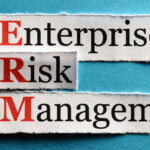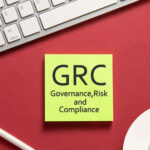Model risk arises from flaws or misuse in financial models, leading to inaccurate results and potential financial and reputational damage. Effective Model Risk Management (MRM) identifies, measures, and mitigates these risks. MRM is crucial due to complex models, regulatory scrutiny, and evolving financial landscapes. A robust MRM framework includes governance, model inventory, validation, and monitoring. Challenges include AI complexity, data quality, regulatory changes, cybersecurity threats, and talent shortages. Anaptyss provides tailored MRM solutions to help financial institutions manage risks and enhance decision-making.
Model risk occurs due to a potential flaw or performance gap in the internal control model, which financial institutions use to measure quantitative information and make decisions. Aside from an adequate control model, its misuse for ulterior motives may also lead to incorrect and unreliable results, posing the model risk.
These models are often designed and employed by financial institutions to assess risk, predict market shifts, valuation of financial instruments, compliance, fraud detection, underwriting, forecasting, and making business decisions.
These risks may arise from various sources, including coding errors, incorrect parameter settings, outdated or inaccurate data, incorrect implementation (applying a model beyond its scope), and relying on the outputs too heavily without adequate human oversight.
These inaccuracies can lead to financial losses, operational disruptions, flawed strategic decisions, increased systemic risks, poor decision-making, and potential violations of regulatory standards. Legal penalties and reputational damage are other consequences.
Importance of Model Risk Management in Today’s Landscape
Model Risk Management helps financial institutions identify, measure, and monitor the risks associated with their models. The role of Model Risk Management (MRM) has become increasingly crucial due to the following reasons:
- The growing complexity of financial models due to emerging technologies, such as AI and machine learning
- Increased regulatory scrutiny, including stringent requirements for model validation, documentation, and governance.
- The rapid evolution of financial markets, products, and technologies.
MRM includes the best practices and processes that financial institutions can use to detect, assess, manage, and mitigate various risks associated with models designed for decision-making and risk management.
A sound MRM framework helps:
- Mitigate the increased complexities and minimize model errors and misinterpretations.
- Avoid financial and reputational damage due to potential violations of regulatory standards in line with BASEL III and the Dodd-Frank Act.
- Ensure the stability of models under stress.
- Validate the data sources to ensure data integrity and manage risks associated with data for maintaining model accuracy.
- Create robust and adaptable models to provide reliable insights in a rapidly evolving market. For deeper insight into emerging model risks, explore our blog on Evolving Model Risks: Challenges and Strategies for Banks.
- Allocate resources more effectively and reduce costly errors that can lead to operational disruptions.
Components of a Robust Model Risks Management Framework
Model Risks Management framework is a policy document that helps financial institutions implement the models effectively. It mainly consists of four components:
1. Model Risks Management Governance Framework
Define the roles and responsibilities of everyone involved in the model lifecycle, including model developers, oversight committees, validators, and users to ensure accountability. Also, establish organizational structure and MRM policies from creating and maintaining the model to implementing, validating, using, and decommissioning it.
2. Model Inventory
Maintain a comprehensive inventory of the models with key attributes, such as purpose, inputs, outputs, risks, and status to track and manage them effectively.
3. Model Validation and Testing
This step includes testing and reviewing the various models for their accuracy, reliability, and appropriateness for the intended use. It involves an assessment of the technical aspect of the model and its performance over time. These tests and reviews include statistical testing, back-testing, sensitivity analysis, and benchmarking against alternative models. Model validation and testing precede the production phase.
Learn how we helped a U.S. bank achieve 40% faster validation of third-party credit risk models using machine learning.
4. Model Monitoring and Reporting
This step includes the “when” and “what” of monitoring the models running in production. It helps manage the models and detect changes in model performance, understand the effects of external factors on the model’s accuracy, and assess when the model fails. Reporting such events is crucial to keep all stakeholders informed about the model risks, outcomes, and corrective actions to improve the model and mitigate model risks.
New Challenges for Model Risk Management (MRM) in Financial Institutions
The MRM landscape is continuously evolving with the evolution of emerging technologies. Below are the top five challenges that can hinder financial institutions’ ability to enhance or build an effective MRM framework.
1. Complexity of AI and ML-Based Models
While AI and ML-based models can process vast amounts of data rapidly and improve decision-making, it may make it difficult to comprehend how inputs are transformed into outputs, also known as black box problems in deep (machine) learning. This can lead to complications in the validation and governance of model risks.
Explore how financial institutions are leveraging digital twins to improve model transparency, stress testing, and lifecycle management.
2. Data Quality, Management, and Privacy
The increase in the model risk management framework’s reliance on data introduces challenges related to data quality, privacy, and management. Poor data quality can impact the model’s accuracy and increase error and inefficiencies leading to an increase in model risks.
Financial institutions need to introduce advanced techniques to ensure data integrity, security, and compliance with privacy laws, such as GDPR and CCPA.
3. Evolving Regulatory Standards
Banks and financial institutions operate in a highly regulated environment that is constantly evolving with social, economic, and environmental changes.
Therefore, keeping up with these mandates requires intensive resources, planning, robust internal controls, and systems that can be costly and time-consuming.
4. Cybersecurity Threats
With rising cybersecurity incidents and sophisticated cyberattacks and breaches, protecting the models and their data and ensuring the integrity and confidentiality of model inputs and outputs pose a major challenge for banks and financial institutions.
5. Lack of Talent and Expertise
Hiring, nurturing, and retaining skilled talent has always been challenging for banks and financial institutions due to fluctuating demands caused by market shifts.
How Can Anaptyss Help
Anaptyss offers tailored solutions and expertise for developing a robust Model Risk Management (MRM) framework that identifies, quantifies, and mitigates model risks in line with regulatory standards.
Our expertise in financial modeling, risk management, and regulatory compliance enables practical and tailored solutions to manage model risks and enhance financial institutions’ decision-making and operational efficiency.
To learn more, reach us at info@anaptyss.com


















